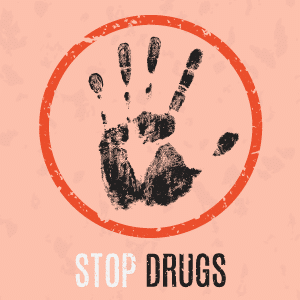Prevention Of Opioid Abuse And Addiction

Why Is Prevention of Opioid Abuse and Addiction Important?
More than 100 people in the United States die every day due to an Opioid overdose. As the nation continues to combat the devastating effects of the Opioid Epidemic, people are beginning to focus efforts on the prevention of Opioid abuse and addiction. Physicians are learning more conservative prescribing practices and how to identify patients that are abusing medication, states have implemented prescription drug monitoring programs, and the U.S. Drug Enforcement Agency (DEA) is now offering events around the country where people can learn about safe disposal of unused prescription medications. Researchers are also looking into other nonaddictive alternatives to Opioids for pain relief, including anesthetic injections and physical therapy.
Safe Prescribing and Clinician Awareness
Many people that become addicted to Opioids are first exposed to the drugs by their physician. According to the Centers for Disease Control and Prevention (CDC), American health care providers wrote more than 214 million prescriptions for Opioid pain medications during the year 2016 — a rate of 66.5 prescriptions per 100 people. The over-prescribing of Opioid medications has become a major societal concern and is one of the main contributing factors to the current crisis. In effort to reduce these risks, several steps have been taken to help physicians better understand the dangers of Opioid misuse and adhere to more cautious prescribing practices.
In 2016, the CDC published its Guideline for Prescribing Opioids for Chronic Pain. These clinical standards are meant to help doctors balance the benefits and risks of chronic opioid treatment, in order to provide patients with safer, more effective pain management. The guidelines focus on determining when to initiate or continue Opioids for chronic pain; Opioid selection, dosage, duration, follow-up, and discontinuation; and assessing potential risks of Opioid use. The American College of Physicians also offers the SAFE (Strategies. Assessment. Fundamentals. Education) Opioid Prescribing Course, available to doctors on its website. The course features six segments focusing on the best practices for how to start treatment therapy with Opioids, how to monitor the therapy, and how to safely end it. Other continuing medical education (CME) courses funded by the U.S. Department of Health and Human Services are available through various universities and medical organizations across the United States. Studies have shown that medical practitioners provided with these educational tools administer the drugs more sparingly and better communicate the risks associated with Opioid medications to their patients.
Prescription Drug Monitoring Programs
Prescription drug monitoring programs (PDMPs) continue to be one of the most promising state-level interventions to improve Opioid prescribing and inform clinicians of patient misuse. A prescription drug monitoring program is a statewide electronic database that tracks controlled substance prescriptions. Pharmacists are required to enter prescriptions into the PMDP when they dispense Opioids to patients, and this helps healthcare providers identify patients who may be misusing Opioid medications. Doctors can also use the database to assess a patient’s history of controlled substance use before prescribing medication, which can help identify individuals that are high-risk for abuse.
The programs were first implemented as a way for law enforcement officials to supervise the frequency that certain medical professionals were prescribing and dispensing Opioids. However, that focus has recently shifted to patient behavior in an effort to better understand the trends of the Opioid Epidemic. According to the CDC, research regarding the effectiveness of the programs is mixed, but the majority of evaluations of PMDPs have illustrated positive changes in prescribing practices, use of multiple providers by patients, and decreased substance abuse treatment admissions. Currently, 49 states and the District of Columbia have an operational PDMP. A variety of state agencies oversee these programs, including state health departments, boards of pharmacy, and law enforcement agencies.
Prescription Drug Take-Back Programs
 Studies have found that the majority of abused prescription drugs are obtained from family and friends, often from the home medicine cabinet. This is due to the high percentage of patients that are not properly disposing of their unused or expired prescription medications. Rather than promptly disposing the Opioid medications when they are no longer needed, many consumers are throwing them away in the trash, dumping them down drains, or simply holding onto them. Prescription Drug Take-Back programs help reduce the risk of others, including friends and family members, accidentally taking or intentionally misusing the unneeded medicine. Prescription Drug Take-Back programs are sponsored by the DEA and include both periodic promotional events and permanent collection sites to encourage proper disposal of unused Opioid medications.
Studies have found that the majority of abused prescription drugs are obtained from family and friends, often from the home medicine cabinet. This is due to the high percentage of patients that are not properly disposing of their unused or expired prescription medications. Rather than promptly disposing the Opioid medications when they are no longer needed, many consumers are throwing them away in the trash, dumping them down drains, or simply holding onto them. Prescription Drug Take-Back programs help reduce the risk of others, including friends and family members, accidentally taking or intentionally misusing the unneeded medicine. Prescription Drug Take-Back programs are sponsored by the DEA and include both periodic promotional events and permanent collection sites to encourage proper disposal of unused Opioid medications.
During National Prescription Drug Take-Back Day events, temporary collection sites are set up in communities around the country where people can bring their unused or unwanted prescription drugs for safe disposal. In October of 2018, 4,770 law enforcement agencies across the country participated in the first National Prescription Take-Back Day and collected over 450 tons of prescription drugs. People who miss the scheduled event dates can still bring unneeded Opioids to DEA-registered collectors. These permanent collection sites may be located in retail pharmacies such as CVS or Walgreens, hospital or clinic pharmacies, and law enforcement facilities. Some authorized collection sites may even offer mail-back programs or collection receptacles to make the process easier for consumers.
Steps Patients Can Take to Prevent Opioid Abuse
In addition to safely storing and disposing of all medications, patients can also reduce their risk of Opioid dependence by:
- Closely following the directions as explained on the label on the medication or by your pharmacist.
- Never stopping or changing a dosing regimen without consulting your physician.
- Being aware of potential interactions with other drugs as well as alcohol.
- Never using another person’s prescription and never sharing your prescription medication with others.
Ongoing Research and Development of Safer Medications
Scientists are currently looking into the development of effective, nonaddictive pain medication as an alternative to Opioids. The National Institute of Health (NIH) is one of the main agencies investing in the research of new therapeutic options and is spearheading the HELP platform, which disperses large grants for academic groups and companies to fund the discovery of new drug targets and devices to safely treat pain. In the meantime, researchers are working on evaluating the effectiveness of current alternatives and their ability to accurately treat chronic pain.
One potential non-addictive alternative is the use of nonsteroidal anti-inflammatories (NSAIDs). Good examples of these drugs include Advil, Motrin, and Excedrin. Doctors attribute these to be a credible alternative to Opioids because a good portion of chronic pain has to deal with the swelling of joints and muscles, and these drugs help decrease inflammation. Acetaminophen, commonly sold under the brand names of Tylenol and Panadol, also works great for managing mild to moderate pain. A recent study in the Journal of the American Medical Association showed that combining non-Opioid drugs such as Acetaminophen and ibuprofen were just as effective at reducing pain as Opioids. Another option is the use of non-opioid prescription drugs, which can be used in combination with Advil or Tylenol. Examples of this includes a class of antidepressants called tricyclic antidepressants, which are very effective at treating nerve pain and have the added bonus of treating depression, which is thought to be a major risk factor for addiction.
Additionally, localized numbing of problem areas is another alternative strategy for treating pain without Opioids that researchers are utilizing. For example, when someone undergoes shoulder surgery, that individual will receive an injection of anesthetic in the lower neck that numbs the area for 18 hours. Physicians are now using anesthetics and corticosteroid nerve block injections in a non-surgical environment to help short-circuit a patient’s chronic pain. There are also non-drug treatments that can be useful in relieving pain, such as physical therapy and acupuncture. Regardless of the method, studies have shown that the best results for alternative pain treatment involve a combination of multiple approaches.
Treating Prescription Drug Addiction
Efforts to limit prescription Opioid abuse are challenged by numerous factors that mostly relate to the way that these medications are perceived in the public sphere. Addiction is still viewed in a negative light in the United States, and medical professionals are currently trying to relieve the stigma attached to addiction through education and help those suffering from the disease by providing effective treatment care options. The scientific community hopes that through continued efforts to educate society, prevent abuse and diversion, and acknowledge factors that play into Opioid abuse will help reduce the devastating impact these drugs have had on the nation.